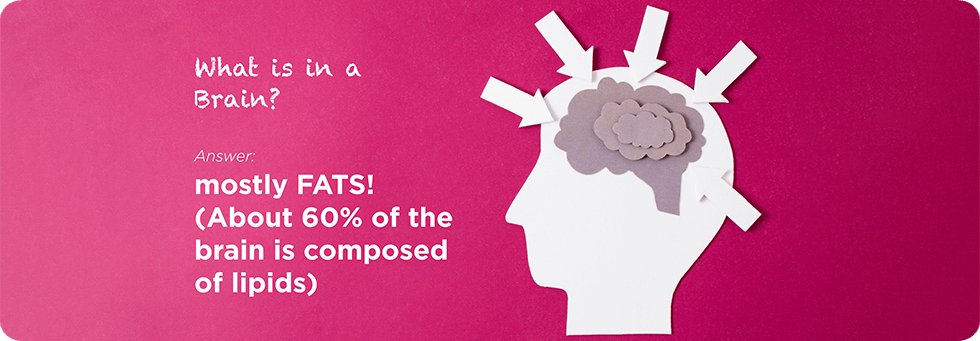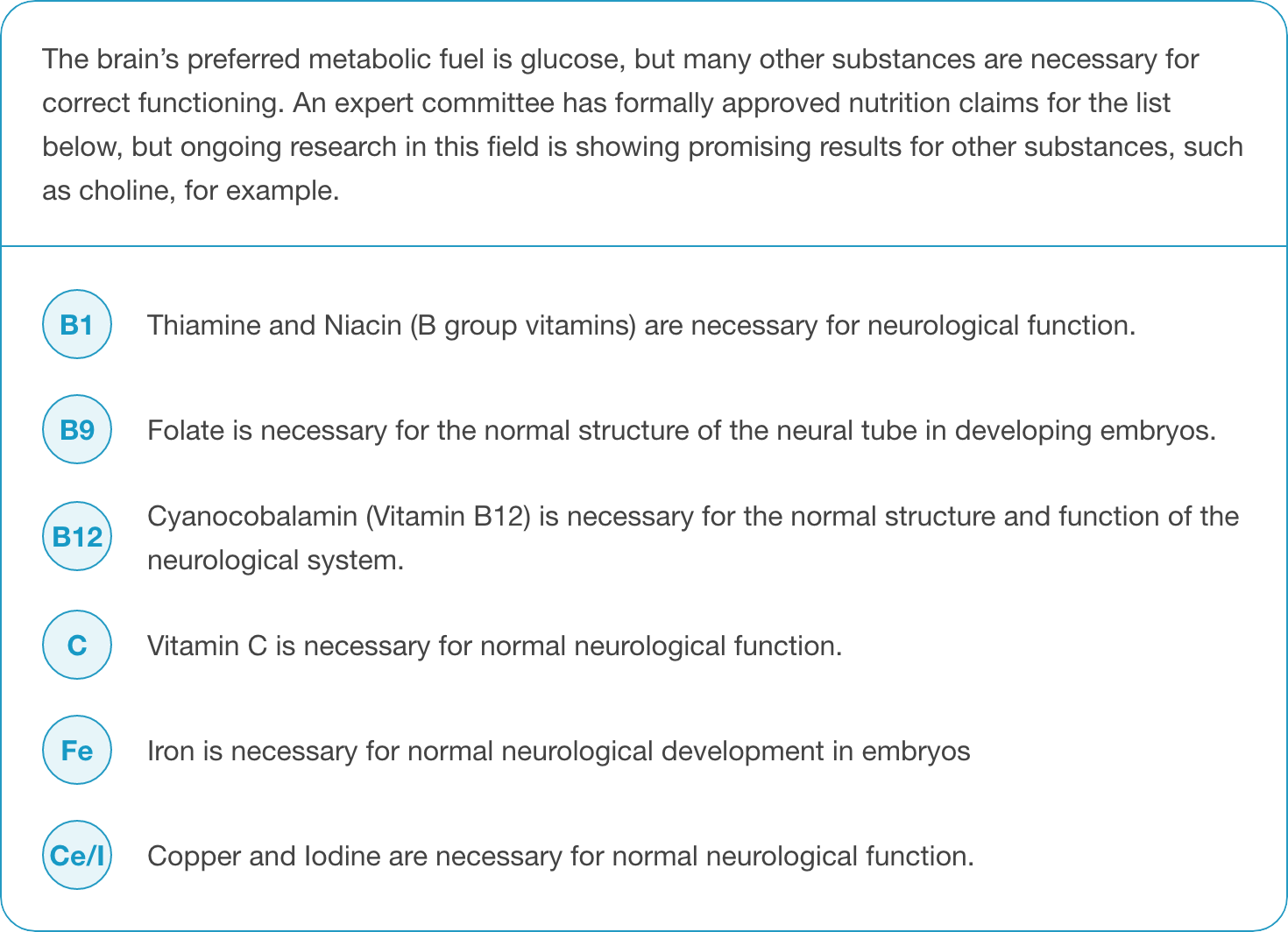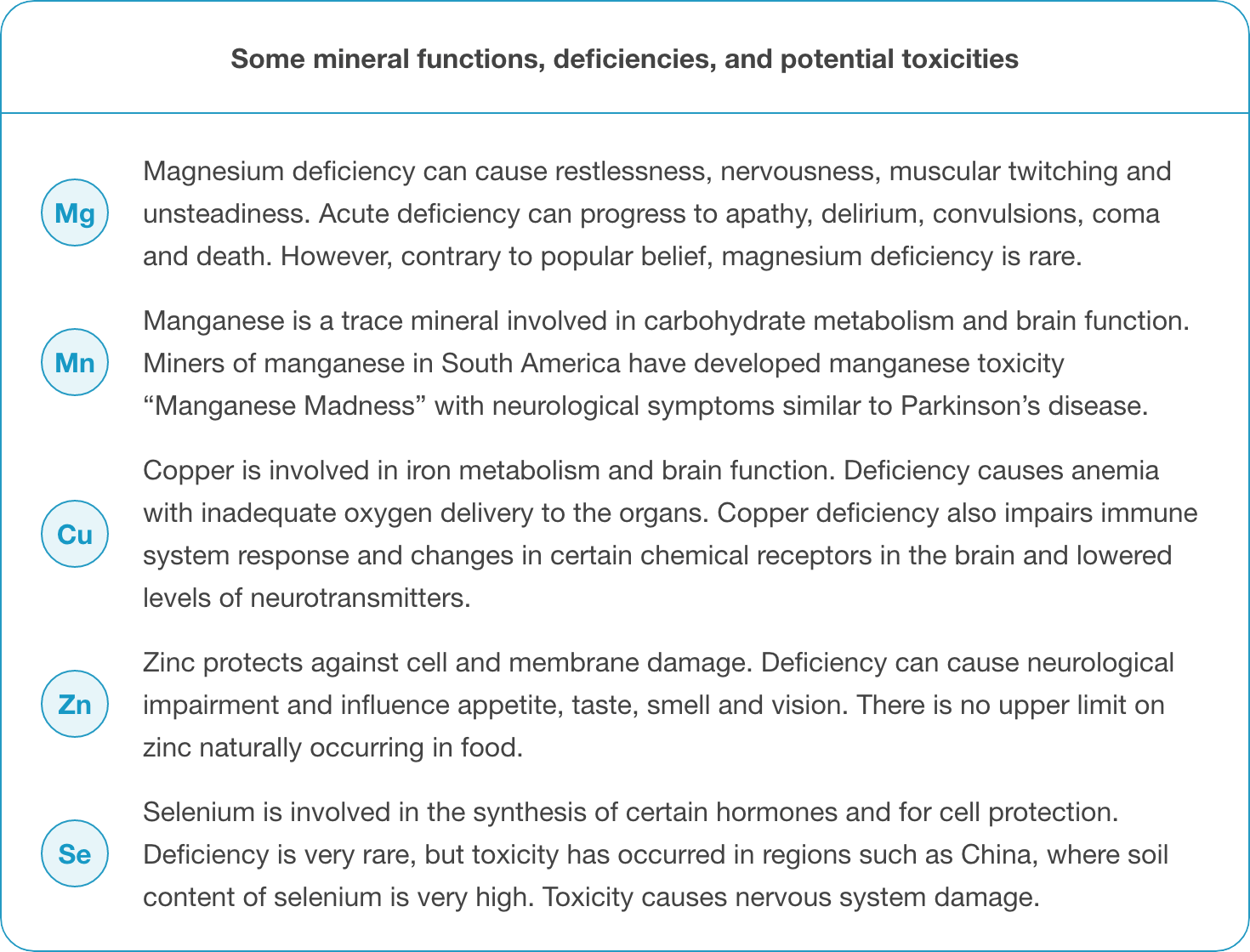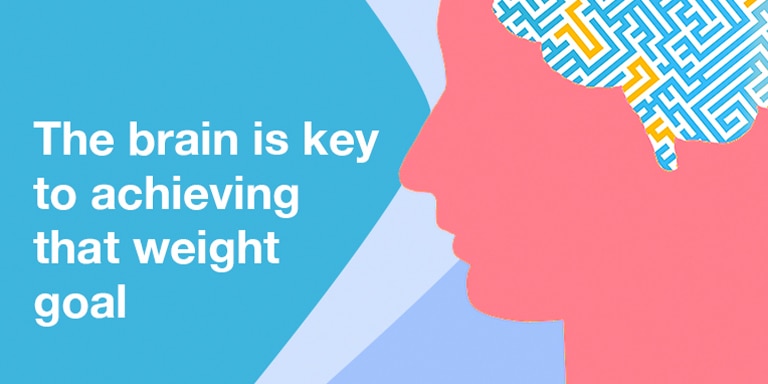The Brain in a Nutshell
The brain is one of the most complex organs in the body and despite being the subject of a great deal of research, it remains to be the least known1.
The human brain contains about a hundred billion neurons surrounded by glial cells whose main role is to provide energy. Neurons communicate with each other by electrochemical signals as every neuron receives signals from myriads of other neurons and the messages are grouped in structures with specific functions. Although the connections between neurons are constantly and rapidly changing and being re-wired, humans lose brain cells every day as they age.

The membranes of neurons are composed of a thin double layer made mainly from fatty acid molecules. Glucose, oxygen, and micronutrients pass through the cell membrane to nourish the brain cells and provide the fuel necessary to conduct nerve impulses.
Myelin, the protective sheath that surrounds neurons, is composed of 15-30% protein and 70-85% lipid2. The brain needs lipids for insulation, and for the speed of operation of neuronal messaging.

Brain Basics 101: The Brain's Energy Supply
The first essential component to look at is the blood glucose level. This measure ensures an adequate supply of glucose to the brain for in very active brain regions, local shortages may occur in the case of high-effort, complex, or prolonged functioning, and when blood glucose levels are relatively low.
Glucose intake improves cognition in older adults3. The effect is found to be rapid but of a short duration (15–60 minutes) and has been tested against a zero-calorie control, and also in the morning after an overnight fast.
Adequate hydration is another component found to be essential to both physical and mental performance4. Traditionally, a 2% or more body water deficit was thought to produce cognitive performance decrements; however, recent literature suggests that even mild dehydration, characterized by 1-2% body water loss, can impair cognitive performance5. Talking about cognitive performance includes the individual’s attentiveness, critical thinking skills, and memory. This emphasizes the importance of including the topic of hydration and its effects on physical and cognitive performance when addressing the health and wellbeing concerns of clients.
In the diagrams below, get to know more about the different substances that can affect the brain and the work done.


Brain Fuel: For Skyrocketing Performance

As the brain developed through evolution, it developed a solution to cope with the huge need for fuel. The brain dissociates neuronal activity from fueling activity by introducing a special type of cell – the glial cell.
Glial cells take in glucose from the blood and convert it to an assimilable form which is lactate6. This special task makes glial cells “the turbochargers” that pump lactate to fuel the neurons. Recent results indicate that glial cells might also be implicated in the coordinated processing of information and action potentials across whole regions of the brain7.
Brain Quell: Damage brought by alcohol

Drinking patterns play a crucial role in how alcohol affects the brain8. Significantly low doses can have the positive effect of reducing damage caused by mental or emotional stress and can actually improve response times while higher doses bring a formidable range of damaging consequences. Chronic alcoholism leads to the gradual destruction of the liver and is related to brain damage as sustained high doses of alcohol shrink the brain.
CT scans reveal significant alterations in the brain topography of alcoholic people, particularly in the ventricular system and the interhemispheric fissures. Greater cognitive impairment is also seen in people suffering from alcohol dependence compared to subjects matched for age and education.
There have been discussions relating to whether women’s brains are more vulnerable than those of men to alcohol toxicity. A clinical trial held in Germany to test this hypothesis found a similar degree of brain shrinkage between men and women, but with damage occurring after a significantly shorter exposure to ethanol in women9. The study corroborates the notion that women have enhanced vulnerability to acute and chronic complications of alcoholism compared to men. Pharmacokinetics of ethanol are different in women and men because most men have a form of ethanol dehydrogenase in their stomachs which most women do not have10. As a result, men start breaking down ethanol faster than women, less gets into their blood, and what does is cleared more quickly.
Food for Thought
Processing signals in the brain requires very large amounts of energy and nature uses parallel processing and plasticity in connection to achieving a signal processing power that is superior to that of present-day computers. It is essential to note that the brain is limited by its ability to fuel its signaling and so synaptic vesicles must be recycled to form new synapses and innumerable dendritic spines during various forms of synaptic plasticity, and this recycling of proteins also uses massive amounts of energy. With this, it is not surprising that the brain involves itself in regulating all of the body’s metabolic and energetic processes.
The most recent scientific research finds that the brain has a controlling influence not only in allocating energy from adipose to muscle, heart, liver, etc., but also in deciding what to eat and when, and when to stop11. This knowledge then leads to the question, “should it really be a surprise that the brain finds such pleasure when we ingest its favorite food – sugar?"


 Nestlé
Nestlé















No comments here yet.